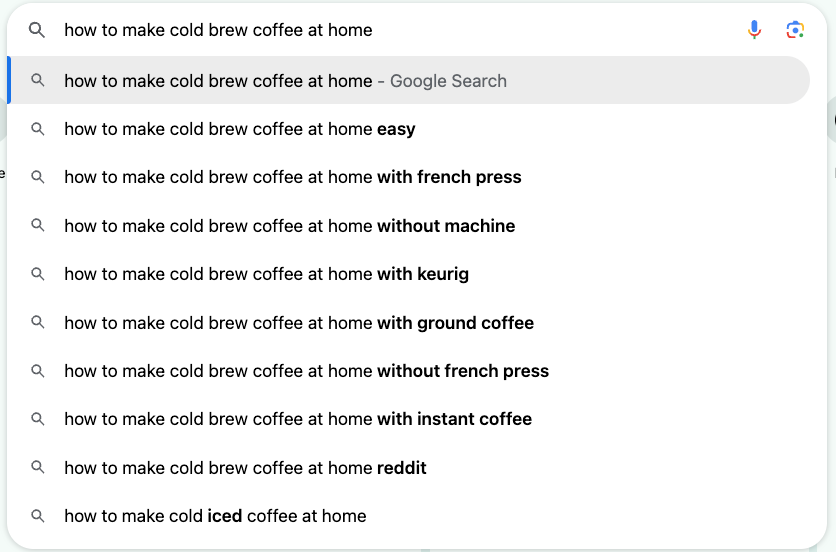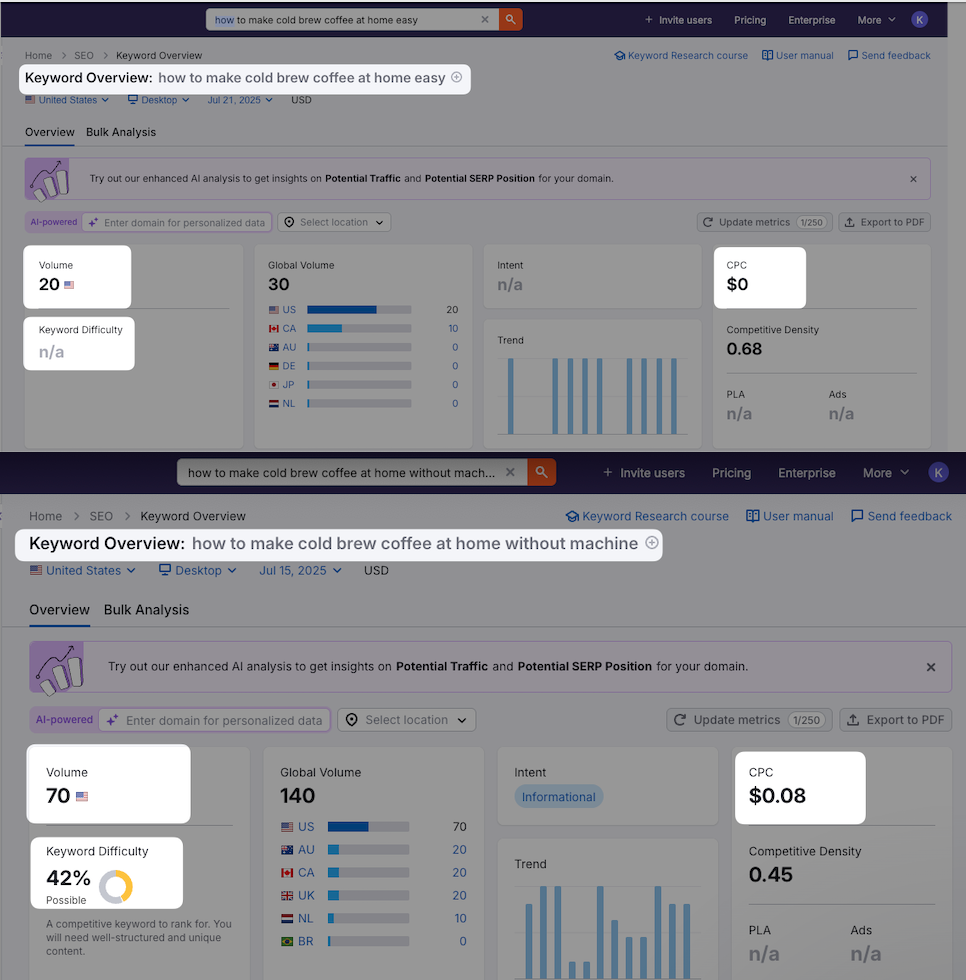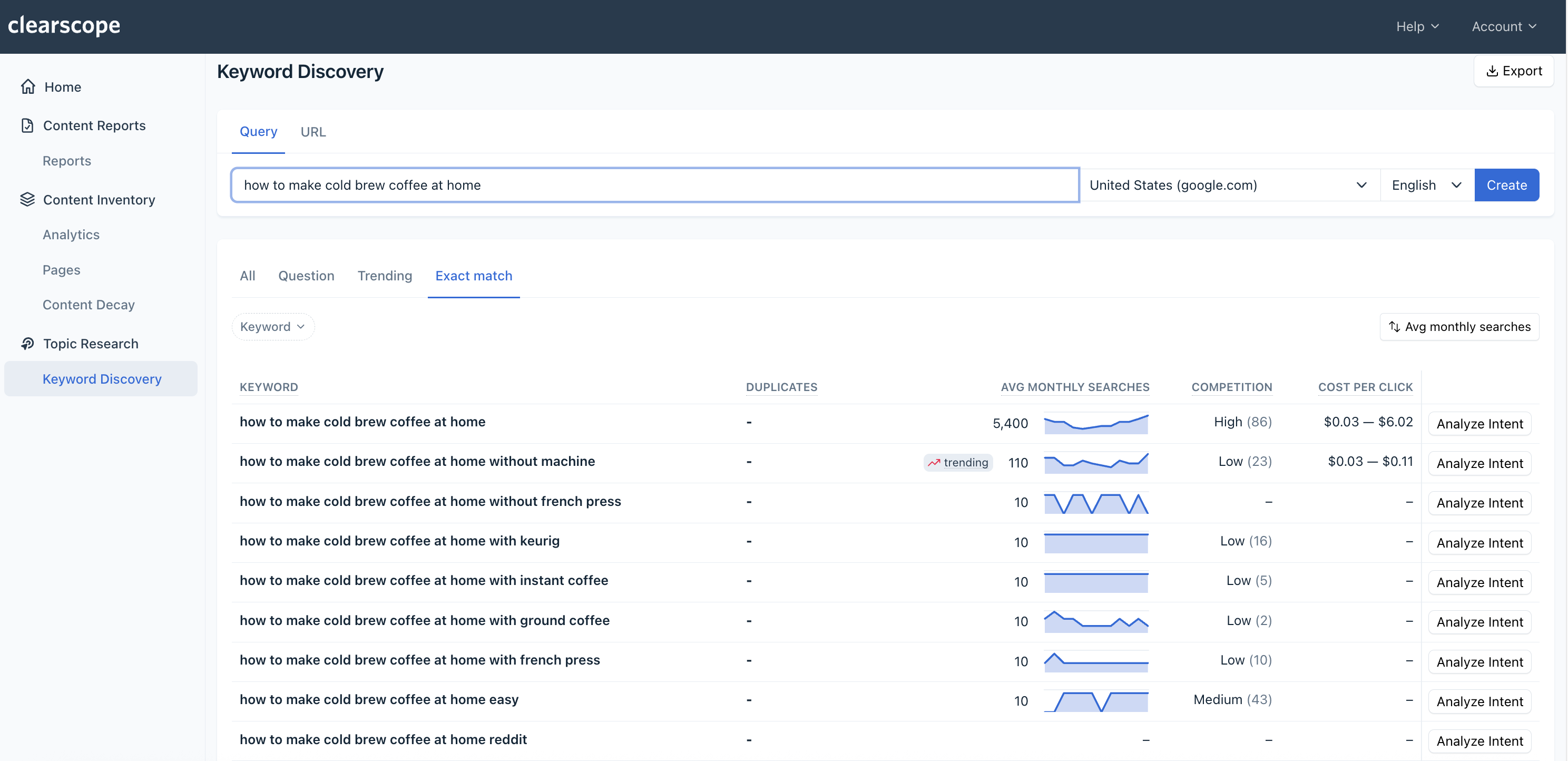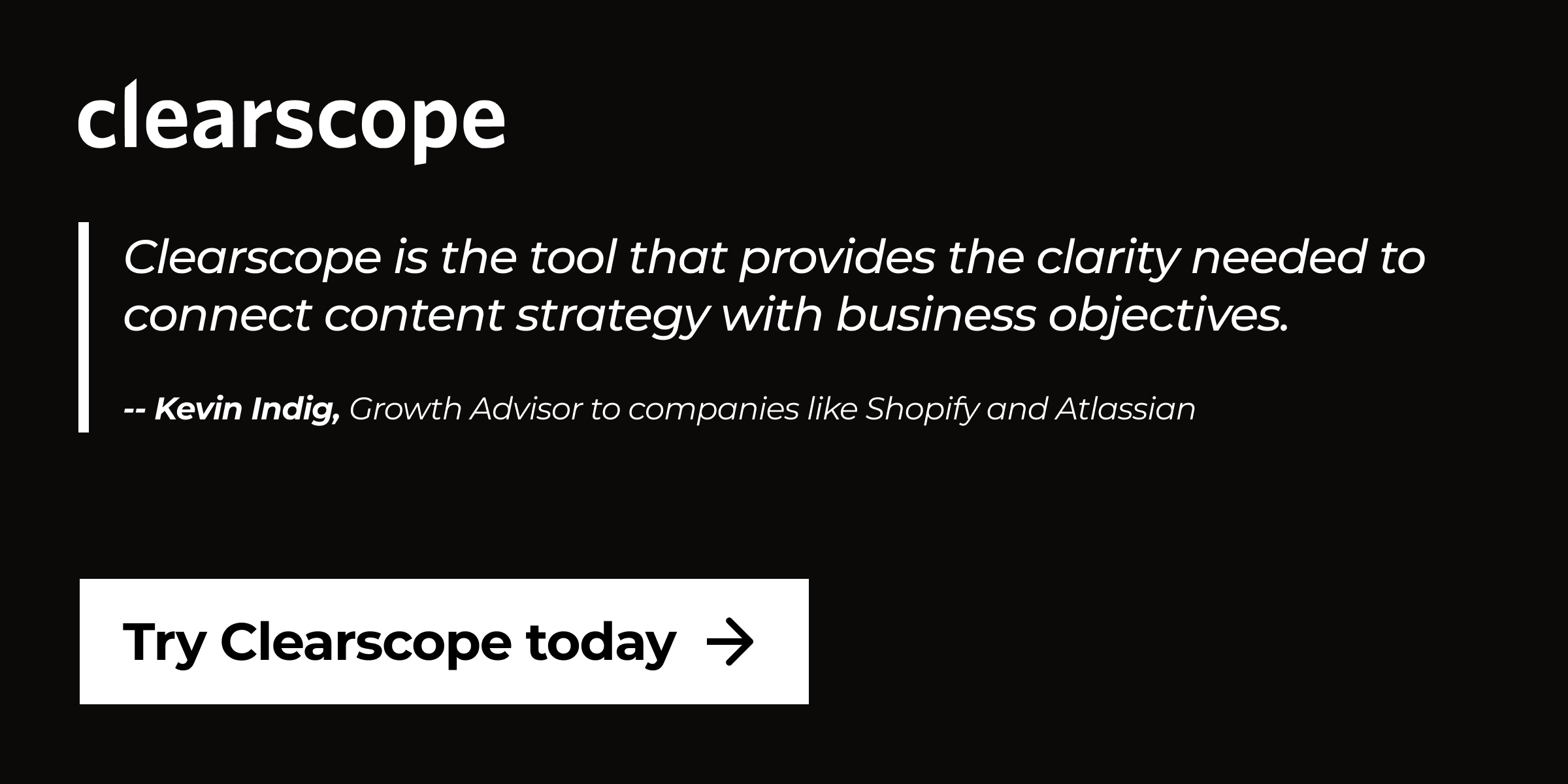What Makes a “Good” Search Query?
Topic: SEO
Published:
Written by: Kathryn Arthur
Great content starts with a great question. Whether you’re trying to rank on the first page of Google, appear in AI-generated results, or drive more organic traffic, everything hinges on one thing: using the right keywords.
This article walks through a step-by-step guide to turning vague ideas into top-ranking queries—backed by keyword research tools, real search engine results pages (SERPs), and clear search intent.
What Good Search Queries Have in Common
Not all search queries are created equal. Some get buried on page 5. Others earn the coveted featured snippet, show up in SERP features, or power AI overviews. What’s the difference?
Effective, SEO-friendly queries tend to share three qualities:
Clear – they show exactly what the user wants
Specific – they narrow the topic and reduce ambiguity
Natural – they sound like how people actually speak
It’s the difference between searching for “coffee” and “best light roast coffee for cold brew under $20.” The former could take you anywhere. The latter is a long-tail keyword that signals real intent—and gives search engines the precision they need to deliver relevant results.
When you build content around queries like that, you’re not just improving visibility. You’re aligning with real people, real needs, and real opportunities to rank.
Effective queries help you:
Discover long-tail keywords with high intent
Match your content to what users actually want
Build topical authority and solve real problems
Naturally improve rankings without stuffing
Reduce bounce rates by meeting expectations
Search engines—and AI tools—are getting smarter. But language still matters. If your query mirrors how people search, and clearly shows what they want, you’re already ahead.
How to Choose Better Queries That Perform
Whether you’re writing a blog post, an ecommerce page, or a product tutorial, here’s how to level up your keyword game.
1. Start with Intent
What is your audience trying to do—learn, buy, compare, or decide?
Identifying user intent (also called search intent) is step one. Informational, navigational, transactional, or commercial—each one requires a different type of content. Your query should reflect the goals behind the search.
2. Use Natural Language
How would someone actually say this?
With the rise of voice search and generative AI, queries are increasingly conversational. Lean into that. Write for people, not just algorithms.
3. Add Context
Who’s your target audience, and what do they care about?
Whether you’re writing for beginners or seasoned experts, context matters. It influences which keywords make sense for your audience—and what kind of web pages they’ll actually click on. This is the foundation of effective keyword selection.
4. Layer in Modifiers
Modifiers like best, how to, for beginners, under $50, or top-rated help narrow your focus. These often match People Also Ask results, featured snippets, and voice queries. They also boost your chances of surfacing for high search volume, low competition keywords.
5. Refine with Clearscope
Once you have a few keyword ideas, Clearscope helps you validate and refine them. Use Keyword Discovery to find related keywords based on monthly search volume, keyword difficulty, and commercial intent—without needing to jump between tools like Ahrefs, SEMrush, or Moz.
Clearscope cuts through the noise and highlights relevant keywords backed by real metrics. It’s a keyword research tool designed to help you uncover the best keywords faster.
6. Use Keywords Naturally
Write for the reader. But once your primary keyword is locked in, sprinkle in related terms that reinforce your topic without forcing them. This improves topical depth—and keeps your writing human.
Remember: it’s not about using more keywords. It’s about using the right ones, in the right way.
From Idea to Keyword Strategy: How to Find a “Good” Search Query
Better content starts with better questions. Whether you’re optimizing for SEO or aiming to surface in AI-generated results, the search query you target sets the stage. Below, we’ll walk through how to craft a high-performing keyword—step by step—with real-world examples, real Clearscope screenshots, and a real goal: creating content that ranks andconverts.
Step 1: Brainstorm Search Intent
Before diving into SEO tools like SEMrush, Ahrefs, or Google Keyword Planner, start with a simple question:
What is the user trying to accomplish?
Let’s say you run an ecommerce site that sells cold brew coffee gear. You want to write a blog post that teaches people how to make cold brew at home—and naturally, recommend your product along the way.
The person searching isn’t just curious about cold brew. They’re likely:
Standing in their kitchen wondering if they can DIY it
Looking for a budget-friendly alternative to their café habit
Influenced by TikTok or social media trends
This tells us their intent is informational, with a possible commercial twist—they want to learn something and might be open to buying.
Now compare:
Broad: cold brew coffee→ Too vague. Could be anything from history to health benefits.
Refined: how to make cold brew coffee at home→ Clear, specific, and rooted in user intent.
That small shift is everything. It turns a generic topic into a long-tail keyword—one that’s more targeted, easier to rank for, and far more aligned with your audience’s goals.
This is the foundation of a strong keyword strategy: don’t just chase volume—chase relevance.
Step 2: Explore Real Searches with Google
Once you’ve got a promising query, sanity-check it in the wild.
Start typing it into Google—“how to make cold brew coffee at home”—and watch autocomplete do its thing.
What shows up is a gold mine of real-time search behavior. Here’s what shows up for that query:

These aren’t just suggestions. They’re insight into what people care about, what they’re comparing, and how deep their curiosity goes.
Each variation is a potential:
Gear guide for Keurig/French press users
Beginner tutorial for no-equipment brewing
Top 10 list of best instant coffees for cold brew
Autocomplete is perfect for surfacing long-tail keyword angles that reflect real language—not just marketing assumptions.
That said, it has limitations:
No insight into search volume
No keyword difficulty
No clear commercial value
To go deeper, it’s time to bring in your SEO toolbox.
Step 3: Validate for Commercial Viability
Once you have a shortlist of queries, use tools like SEMrush, Clearscope, or Google Keyword Planner to evaluate:
Monthly search volume – is there enough interest?
Keyword difficulty – can you realistically rank?
CPC or Google Ads activity – is there business value?
Search engine optimization opportunities – is the intent aligned with your offer?
Let’s compare two queries through SEMrush and see how they stack up.

At a glance, both seem solid. But here’s why the second one stands out:
Higher monthly search volume
Moderate competition = greater chance to rank
CPC value suggests commercial interest
It’s specific. It’s actionable. And it shows buying signals. This is where metrics matter. If a keyword is backed by real SEO data—and it fits your digital marketing goals—it’s likely a smart one to pursue.
Behind Every Great Article Is a Great Query
At the end of the day, your content is only as strong as the keyword it’s built on.
From early ideation to keyword validation, getting clear on what your audience is asking and why is what separates content that just exists from content that performs.
But let’s be real: doing this across multiple tools can feel clunky and time-consuming.
That’s why we built Clearscope.
How Clearscope Makes It Easier
Instead of toggling between autocomplete, keyword planners, SERPs, and spreadsheets, Clearscope brings everything together in one intuitive platform.
Here's how:
Explore Related Queries
Start with a single keyword—Clearscope’s Topic Explorer surfaces high-signal related phrases based on volume, difficulty, and relevance. No noise, no duplicates, no guesswork.

Analyze True Intent
See what searchers actually want to do—and how Google treats the query. Are you up against featured snippets? AI overviews? Video carousels? Clearscope shows it all.

Validate Commercial Viability
Prioritize keywords with the right mix of volume, competition, and CPC indicators. You’ll know which queries are worth writing about before you invest time creating content.

With your keyword strategy grounded in data, you’re now set to create content that’s aligned with real demand and real potential.
Ready to Turn Better Queries into Real Results?
Use Clearscope to build your keyword strategy the smart way—fast, focused, and backed by real data.
Happy writing!

Why Search Intent Optimization Beats Keyword Optimization
Optimizing for search intent vs. SEO keywords: Which is better? Explore the difference between keyword and intent-based SEO strategies.
Read moreSearch Intent 101: What It Is and Why It Matters
Discover how understanding search intent can help you create higher-ranking, better-performing content—faster and with less guesswork.
Read moreSearch Intent Analysis, Humanized: Introducing Clearscope's New AI-Powered Intent Summaries
Discover how Clearscope’s new AI-powered search intent tool goes beyond simple labels with human-readable summaries that elevate content optimization and user experience.
Read more